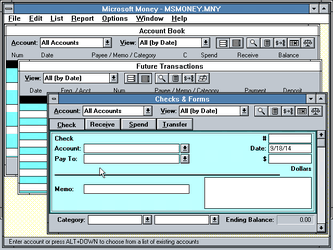

Because the things that DON’T work are even more educational than the things that do. And I also want to cover some other approaches – ones that seem like they should work but do not. Next Post: Explaining the Formula, and Showing How NOT to do itĮxplaining that relatively simple formula, if I do a thorough job, will consume its own post. Note that I am using PeriodNum (which keeps increasing across years and is unique to a given Month/Year combo), not MonthNum (which is on the pivot and “resets” to 1 for January of each year). In short, this measure clears all filters on the entire Periods table, then adds back two filters – restores the current context for Year (using VALUES), and limits the PeriodNum to be less than or equal to the current context (I will explain later why I used MAX and not just VALUES). It has some quirks that I will iron out in the next post.

I hesitate to call it “the” formula, because there are multiple variations that work, and some fit certain biz requirements better than others. To keep this post short and sweet, I’m just going to share a working formula. In fact, finding myself in a situation like this is what triggered me to start the Precedence Project in the first place. Getting to that desired result, in my experience, is something you either stumble upon quickly or flail around forever and never find. It has Year and MonthNum on rows, and the simple measure Total Sales. (Really, this is Part Three in disguise). In fact this is the same data set I have been using for the Precedence Project. I’m going to use that second calendar above, the one that has no dates in it. So, what’s a report designer to do? Give up? No way. They don’t want to hear how the blender is constructed, they just want their daiquiri. They just keep insisting on seeing useful things, like Year to Date totals. They don’t care that the data is structured one way or another under the hood. This Table DOES Truly Represent the Business Calendar But Has No Dates in It! So what do you do when you still need a “Year to Date” Total? I very often find myself working with a “calendar” that looks like this:Ĭan’t Use Time Intelligence Functions With a Calendar Like ThisĪnd sometimes I even find myself with “calendars” that don’t have any date columns in them at all: that are useful for calculating many things, including a running total.īut with the exception of DATESBETWEEN, I seldom get to use any of those “time intelligence” functions, for the simple reason that our clients almost never operate on a traditional calendar. In summary, for this kind of use case, generate rows and / or multi-row tools are extremely helpful.PowerPivot provides a host of great functions like DATESYTD, DATESMTD, DATESBETWEEN, etc. Your upstream data source may have a distinct record for month 8, in which case you may not need to use the "generate rows" tool but, if you lack that record but need a complete picture of the 12 months, you might use "generate rows" to fill out your 12 months and populate it with data from your upstream sources.

But in month 8 he doesn't make a payment. For example, you expect loan 123 to make a payment every month for, say, 12 months. In some use cases where I need to walk down value in a periodic fashion, I'll need a generate rows tool. You bring in your data from the DB, file or wherever, and perform a lot of the work in the workflow with multi-row tool. My work role has required me to create several walkdowns of valuation, including associated status changes and multi-row tool is very much my friend for that kind of use case. I want to take a snapshot at that moment, but maybe the bigger issue is where it transitions from FCL (foreclosure) to DFLT at the second to last row. What's the best way to take the previous months balance of 9,851,144.40 and measure against the original balance of 9,962,400.00? I want this to be as dynamic as possible, since I want this to run (hopefully in-DB for performance reasons) on tens or hundreds of thousands of assets, all with monthly updates going back several years.
#Ms moneymoney software with calendar running totals series#
I know there are a number of time series forecasting tools, but how can I grab data from previous months on the same asset? One specific loan example below is showing its payment history from origination to default - you can see current balance decreasing from regularly scheduled payments until line 7, where it misses a payment and the status changes from Curr to DQ30. I have a very large SQL database on a portfolio of assets (>100k assets) that updates monthly, and I'm trying to build out a tracker that shows the transitioning of assets from current to default status.

Hey all - still new to Designer, trying to build out some more complicated time series trackers.


 0 kommentar(er)
0 kommentar(er)
